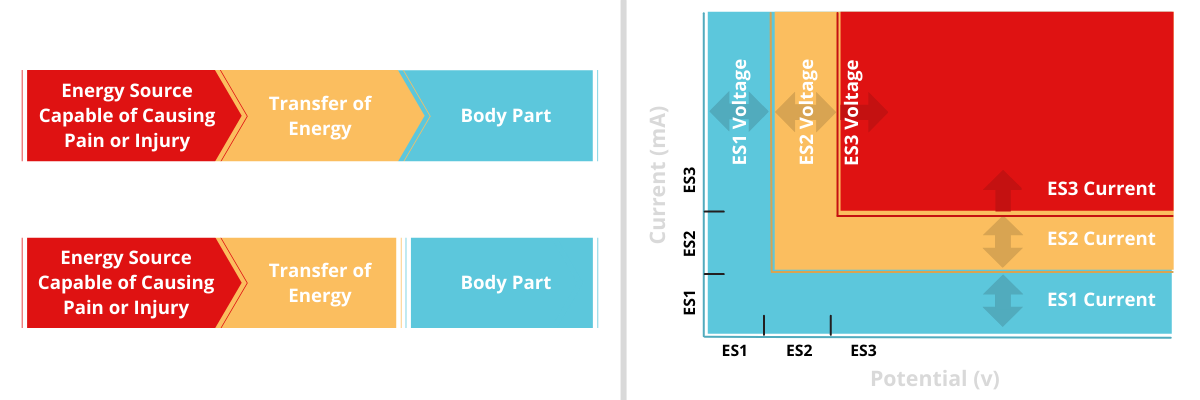Please get in touch to see how we can support you on your next Power Supply Application project.
Find out moreProducts
Please get in touch to see how we can support you on your next Power Supply Application project.
Find out moreAUDIO/VIDEO, INFORMATION AND COMMUNICATION TECHNOLOGY EQUIPMENT
As of December 20, 2020, standards IEC 60950-1 for ICT equipment and IEC 60065 for AV equipment, and their regional harmonized standards, have been withdrawn.
Manufacturers who wish to place products on the market will need to meet the requirements of the new IEC 62368-1 standard to ensure compliance. This information aims to help manufacturers of affected products manage the transition and ensure continued compliance, by explaining the reasons for the new standard and its governing principles, the provisions built in to assist the transition, and how best to ensure procured components like power supplies will satisfy its requirements.
IEC 62368-1 2nd Edition is more than a name change or merger of IEC 60950-1 and IEC 60065. The new standard is significant because it introduces a new hazard-based perspective to product testing for both audio and video (AV) and the Information and communications technology equipment (ICT) industries in the EU and North America. The result of the new single standard means that it will implement different engineering principles and terminologies.
The IEC Technical committee who prepared the two previous standards IEC 60950-1 and IEC 60065, created the new standard to address the technological convergence of the AV and ICT industries, where equipment is now often capable of both AV functions such as playing music or video and personal computing. Because of the diversity of products covered by the Standard, it takes what is called a ‘hazard-based’ approach to product assessment. Compliance Scope & Timelines IEC 62368-1 is not a simple merger of IEC 60950-1 and IEC60065, it is a completely new standard that only applies to products within its stated scope. It has specific compliance criteria -some relating to performance and some to construction.
Manufacturers who wish to place products on the market will need to meet this standard to ensure compliance. Similarly, any product (to which the standard applies) that is currently on the market within Europe will be required to meet the new standard as of December 20, 2020. CENELEC has adopted the standard, and it has also been formally issued as an EN Harmonized standard, to be used in compliance with the LVD (Low Voltage Directive) for CE Marking purposes within Europe. CENELEC has announced implementation dates for the standard that will mandate its use throughout Europe -replacing both EN 60950-1 and EN 60065. For the CB scheme, IEC 62368-1 has been listed under categories OFF and TRON and CB certificates and reports have consequently been issued.
REGIONAL VARIATIONS
The IEC 62368-1 standard has been harmonized with other global standards for regional compliance. For this reason, you may as any of the following:
HAZARD-BASED SAFETY ENGINEERING STANDARD (HBSE)
The single, harmonised standard aims to create a more future-proof document by requiring that manufacturers show known hazards have been considered and their products have been built to be safe for use in their intended environments. Furthermore, IEC 62368-1 expects to give product designers more flexibility in their designs and evaluations, keeping pace with technology without requiring frequent, expensive, and onerous revisions.
With the advance of new technologies and markets, the single, harmonised standard intends to provide a more transparent framework to evaluate the safety of new equipment. All current equipment that falls within IEC 60950-1 and IEC 60065 will be encompassed by the new standard, with additional products included within its scope. A list of product categories consists of the following:
In addition, the new standard is not just limited to products but also relates, where applicable, components and subsystems. Therefore, companies that third-party source subsystems like power supplies will need to establish whether the required product is certified to IEC 62368-1. Likewise, components that are fitted inside equipment, like chassis mount power supplies, are also subject to the standard, together with any external power supplies and adapters that are shipped alongside boxed equipment.
HAZARDS AND SAFEGUARDS
As mentioned above, the move to HBSE principles demonstrates a shift in focus for the new standard. HBSE is a field of safety science that has been gaining ground over the last 25 years, shifting product-safety legislation towards a performance-orientated way of thinking and making it more flexible and effective than prescriptive approaches. Its principles keep equipment users safe by identifying potentially hazardous energy sources capable of causing pain or injury to users and recommending the appropriate means of preventing those energy transfers from occurring. Its rationale can be summarised as follows:
HBSE represents hazards and safeguards as three-block models that explain the link between energy source, energy-transfer mechanism or safeguard, and the end-user, as follows:
As well as allowing for bodily injury, the new standard also applies the HBSE three-block measure to assess the potential for electrically-caused fire, recognising the need for fuel to be present for ignition to happen. Furthermore, 62368-1 references all energy sources relevant to ICT/AV electrical equipment, including electrical, thermal, chemical, kinetic, and radiated energy.
IEC 62368-1 standard classifies the energy levels a user might be exposed to as ES1, ES2, and ES3, with ES1 being the lowest category. A comparable rising scale is used when analysing electrical-fire hazards and their means of prevention. This scale of energy levels helps designers establish the necessary safeguards for their product, including methods such as protective earthing, insulation, and fire-proof spaces. Likewise, the user is also categorised by competence as either an ‘ordinary person’, ‘skilled person’ or ‘instructed person’.

Fortunately for our customers, the path towards compliance has been made easier with our brand-new range of IEC 62368-1 certified Products.